Solar eclipse of May 11, 1975
A partial solar eclipse occurred on May 11, 1975. A solar eclipse occurs when the Moon passes between Earth and the Sun, thereby totally or partly obscuring the image of the Sun for a viewer on Earth. A partial solar eclipse occurs in the polar regions of the Earth when the center of the Moon's shadow misses the Earth.
| Solar eclipse of May 11, 1975 | |
|---|---|
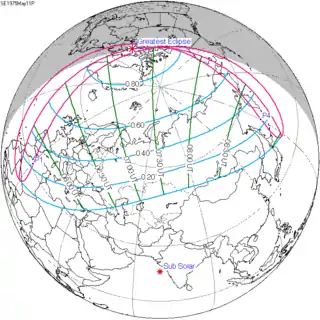 Map | |
| Type of eclipse | |
| Nature | Partial |
| Gamma | 1.0647 |
| Magnitude | 0.8636 |
| Maximum eclipse | |
| Coordinates | 69.7°N 80.2°W |
| Times (UTC) | |
| Greatest eclipse | 7:17:33 |
| References | |
| Saros | 118 (66 of 72) |
| Catalog # (SE5000) | 9454 |
Related eclipses
Solar eclipses of 1975–1978
There were 8 solar eclipses (at 6 month intervals) between May 11, 1975 and October 2, 1978.
| Solar eclipse series sets from 1975–1978 | ||||||
|---|---|---|---|---|---|---|
| Descending node | Ascending node | |||||
| Saros | Map | Gamma | Saros | Map | Gamma | |
| 118 |  1975 May 11 Partial | 1.06472 | 123 | 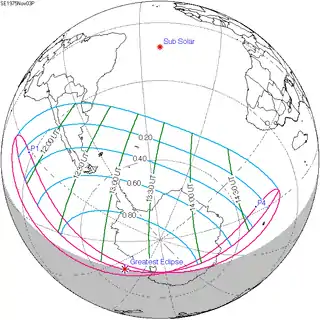 1975 November 3 Partial | -1.02475 | |
| 128 | 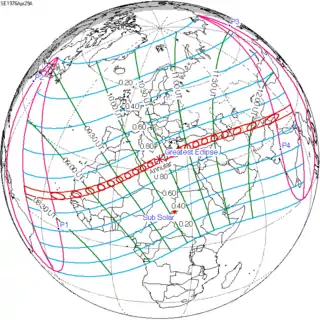 1976 April 29 Annular | 0.33783 | 133 | 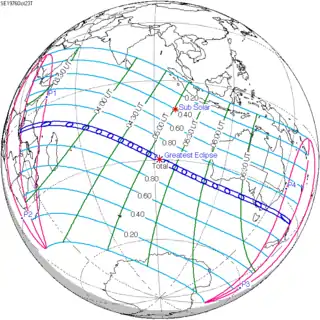 1976 October 23 Total | -0.32699 | |
| 138 |  1977 April 18 Annular | -0.39903 | 143 |  1977 October 12 Total | 0.38363 | |
| 148 | 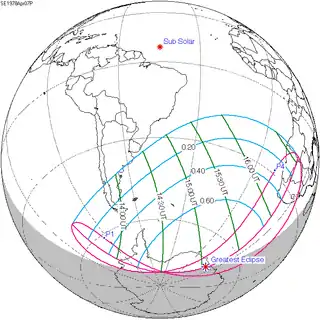 1978 April 7 Partial | -1.10812 | 153 | 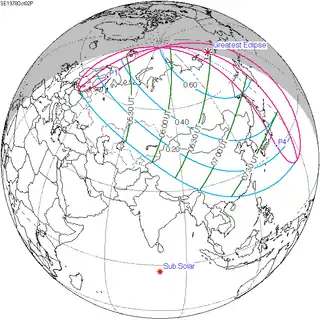 1978 October 2 Partial | 1.16164 | |
Saros 118
It is a part of Saros cycle 118, repeating every 18 years, 11 days, containing 72 events. The series started with partial solar eclipse on May 24, 803 AD. It contains total eclipses from August 19, 947 AD through October 25, 1650, hybrid eclipses on November 4, 1668 and November 15, 1686, and annular eclipses from November 27, 1704 through April 30, 1957. The series ends at member 72 as a partial eclipse on July 15, 2083. The longest duration of total was 6 minutes, 59 seconds on May 16, 1398.
| Series members 62–72 occur between 1901 and 2083: | ||
|---|---|---|
| 62 | 63 | 64 |
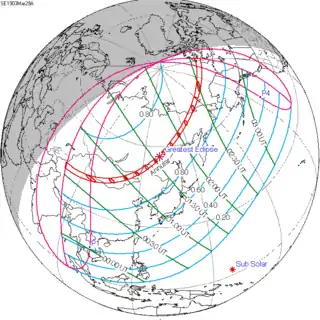 Mar 29, 1903 |
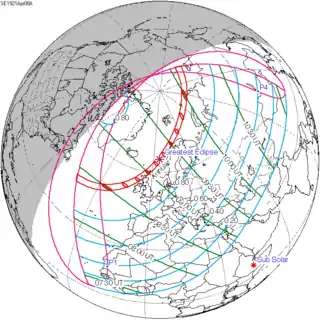 Apr 8, 1921 |
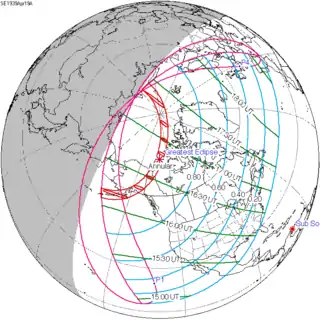 Apr 19, 1939 |
| 65 | 66 | 67 |
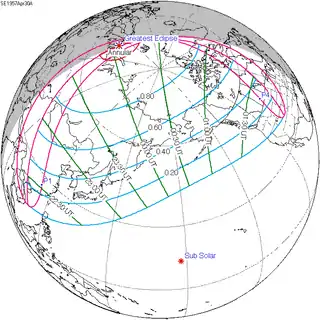 Apr 30, 1957 |
 May 11, 1975 |
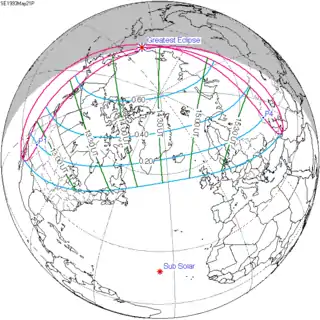 May 21, 1993 |
| 68 | 69 | 70 |
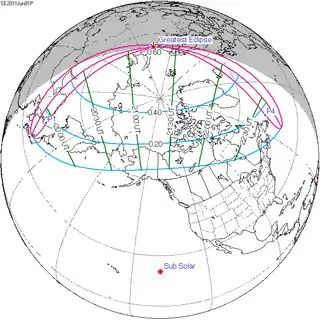 Jun 1, 2011 |
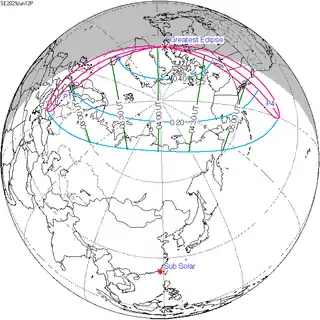 Jun 12, 2029 |
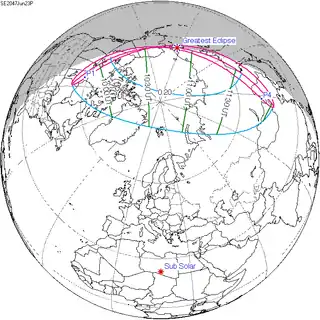 Jun 23, 2047 |
| 71 | 72 | |
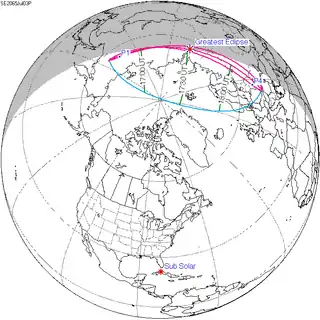 Jul 3, 2065 |
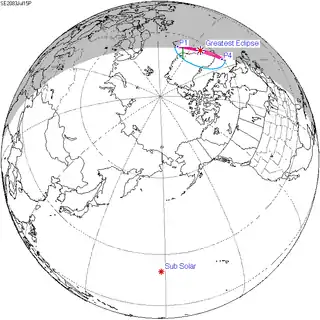 Jul 15, 2083 | |
Metonic cycle
The metonic series repeats eclipses every 19 years (6939.69 days), lasting about 5 cycles. Eclipses occur in nearly the same calendar date. In addition, the octon subseries repeats 1/5 of that or every 3.8 years (1387.94 days). All eclipses in this table occur at the Moon's descending node.
| 21 events between July 22, 1971 and July 22, 2047 | ||||
|---|---|---|---|---|
| July 21–22 | May 9–11 | February 26–27 | December 14–15 | October 2–3 |
| 106 | 108 | 110 | 112 | 114 |
| July 21, 1952 | May 10, 1956 | February 26, 1960 | December 16, 1963 | October 3, 1967 |
| 116 | 118 | 120 | 122 | 124 |
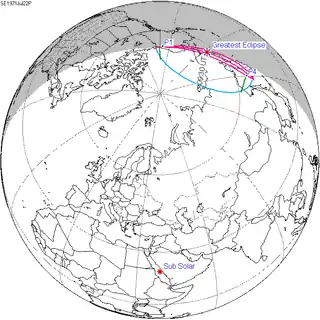 July 22, 1971 |
 May 11, 1975 |
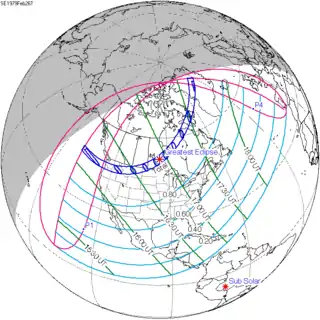 February 26, 1979 |
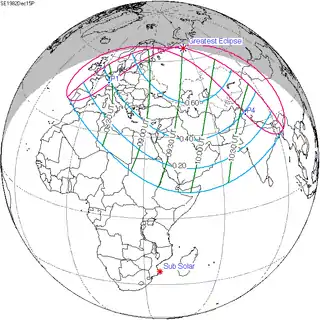 December 15, 1982 |
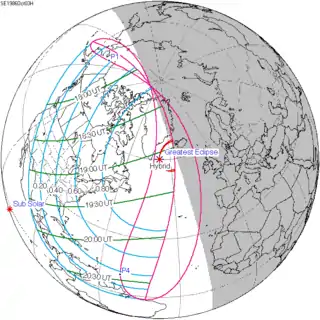 October 3, 1986 |
| 126 | 128 | 130 | 132 | 134 |
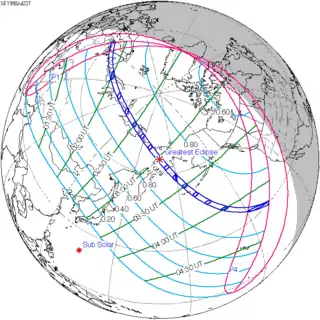 July 22, 1990 |
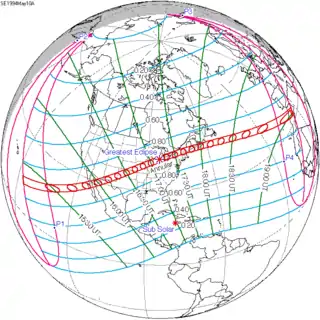 May 10, 1994 |
 February 26, 1998 |
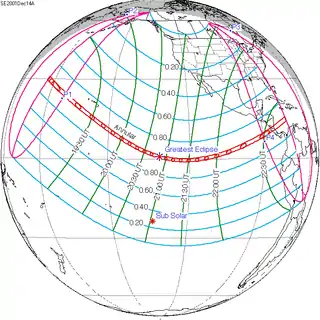 December 14, 2001 |
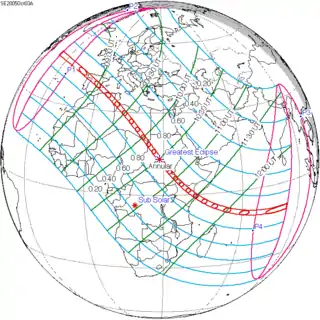 October 3, 2005 |
| 136 | 138 | 140 | 142 | 144 |
 July 22, 2009 |
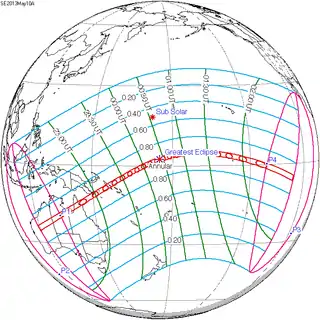 May 10, 2013 |
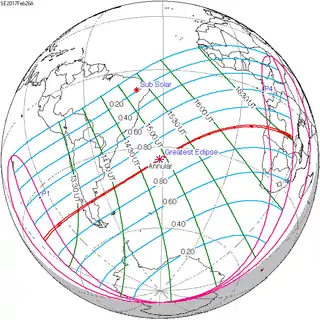 February 26, 2017 |
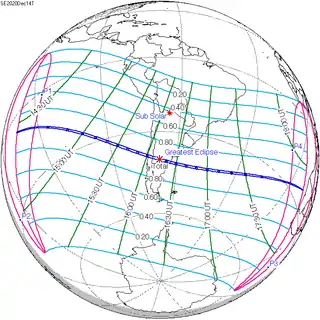 December 14, 2020 |
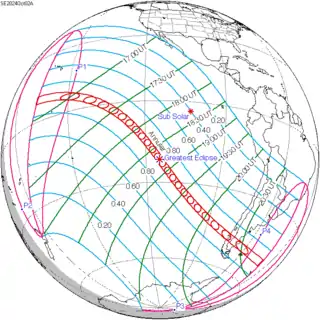 October 2, 2024 |
| 146 | 148 | 150 | 152 | 154 |
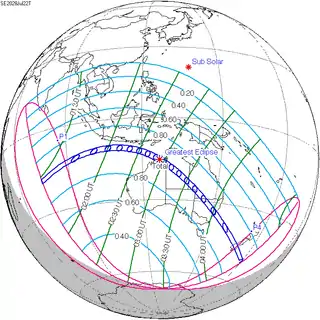 July 22, 2028 |
 May 9, 2032 |
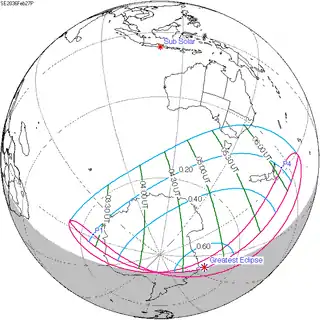 February 27, 2036 |
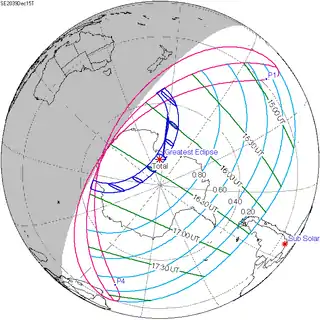 December 15, 2039 |
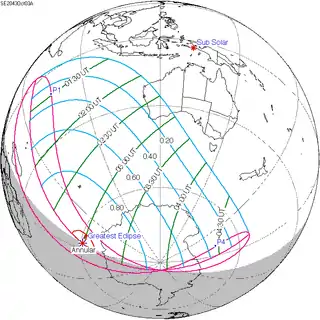 October 3, 2043 |
| 156 | ||||
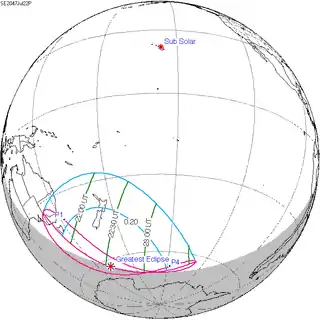 July 22, 2047 | ||||
References
External links
- Earth visibility chart and eclipse statistics Eclipse Predictions by Fred Espenak, NASA/GSFC
- TimeAndDate.com: May 11, 1975 Partial Solar Eclipse appearance
- Preliminary results of observations of the solar eclipse of May 11, 1975 (Russian report)
- Partial Eclipse of the Sun: 1975 May 11 HM Nautical Almanac Office
| Wikimedia Commons has media related to Solar eclipse of 1975 May 11. |
.jpg.webp)

